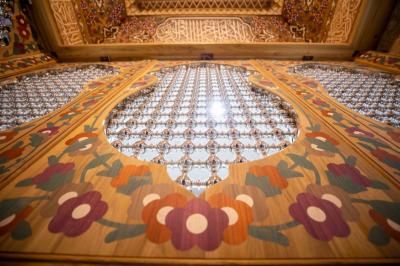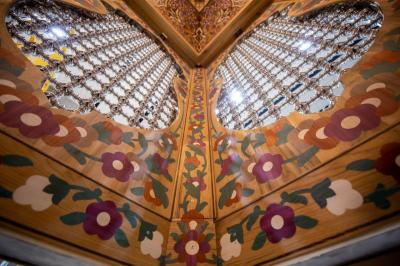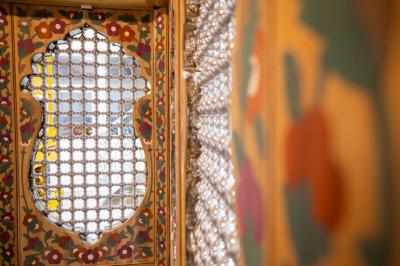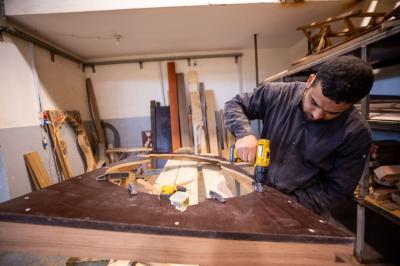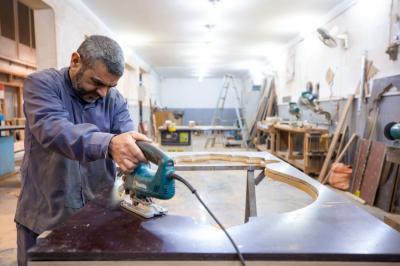The carpentry technicians working in the department of manufacturing doors and grids of the holy shrines in the al-Abbas's (p) holy shrine, started installing the wooden decorative sections that encase the knotworks of the grid of the shrine of Lady Zaynab (peace be upon her) from the inside, after the completion of the manufacture and installation of its internal ceiling.
The head of the department, Mr. Nadhem al-Ghurabi, told Al-Kafeel Network, "The woodwork of the grid has reached advanced stages, and keeps pace with what is being manufactured from the rest of the metal parts, including the knotworks. After most of the 14 knotworks were almost finished, the work was carried out to cover it from the inside with engravings and vegetal decorations of natural colors in harmony with the inscriptions and decorations of the ceiling, making the grid a single artistic panel.”
He added that "this work is carried out according to precise and special measurements, as it is installed to cover the grid from the inside, with a decorative piece for each knotwork that takes the form of overlapping half-archs, with a height of (143 cm) at the highest point and a width of (80 cm) at the widest point, the top of which is connected with the inscribed wooden decorative strip on the ceiling of the grid, and its base is connected to the end of the lower part of the grid."
He explained, "The inscriptions and decorations were carefully and meticulously distributed, shaped and made of wood. Modern technical methods were used in their engravings by the most skilled artists in this field, who spared no effort to complete this project in the most splendid and most beautiful image, and as befits the status of the owner of the holy shrine, and to demonstrate the competencies, reputation and ability or Iraqi handicraftsmen in the field, who excelled in the manufacture of its metal parts."
He concluded, "No colors or dyes were used in the manufacture and formation of these parts, but rather relied on the natural colors of wood that was imported from international origins with high specifications and quality, and all types of these woods were used according to special proportions and measurements prepared in advance to accomplish this blessed work."

